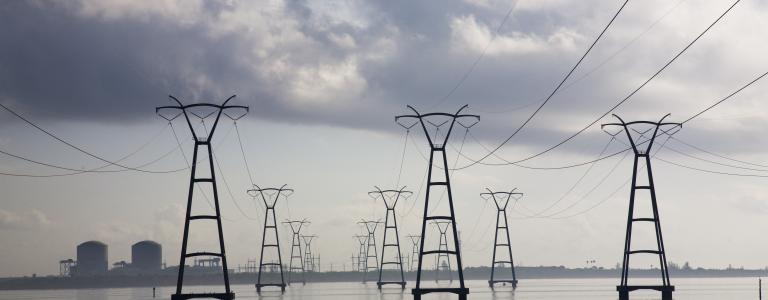Subsidies to a Proposed Nuclear Power Plant Should Feature Large in UK Government’s Review
As the UK Government considers whether to proceed with Hinkley Point C—a proposed nuclear power plant—it should weigh the full cost of the project to the public purse. By our calculation the subsidies are likely to be at least £40 billion.
As the UK Government considers whether to proceed with Hinkley Point C, it should weigh the full cost of the project to the public purse.
On July 29th the UK government announced that the final decision to build Hinkley Point C—what could become the first nuclear power station to be constructed in the UK for more than two decades—will be postponed pending a review of the project. Earlier this year the French state-owned power company EDF received a green light from its board of directors to proceed with the project, despite the resignation of one board member and a significant minority of members voting against the project.
The project review has been called in part due to the publication of a recent report from the National Audit Office that estimated that the cost of the so-called Contract for Difference (CfD), which provides a guaranteed price for electricity produced by the plant for 35 years, has increased by up to 5 times. The reason for the increase is a fall in the long-term electricity price forecast, which has been revised since the key terms of the project were agreed in 2013. This price revision increased the value of the premium due to EDF from £6.1 billion to £29.7 billion.
Even though the guaranteed price for electricity represents a huge cost it is not the only subsidy to the project. The UK Government’s review should consider all other subsidies that will benefit the project. An IISD review of the project published in February 2016 identified five significant subsidies:
1.The Contract for Difference guaranteed price for electricity estimated by the National Audit Office as £29.7 billion;
2. The cost of loan guarantees that underwrite finance to the project estimated to reduce project borrowing costs by between £8.2 to 20.3 billion;
3. Waste disposal costs which are capped by the government. The true costs for long term geological storage are deeply uncertain;
4. Decommissioning costs, for which the government will be liable beyond the first £5 billion covered by the EDF. Current estimates for decommissioning the UK existing fleet are around £7 billion per site.[1]
5. De facto insurance against a nuclear accident provided by the government. EDF’s insurance covers only the first EUR 1.2 billion. The Fukushima disaster is estimated to have cost hundreds of billions.
When these subsidies are taken together the total cost is likely to be at least £40 billion. This is significantly more than the estimate for CfD from the National Audit Office.
While the cost of nuclear energy has increased, renewable energy costs have been falling. Contracts for renewable generation are auctioned; in the February 2015 auction the “strike price”, the price that generators receive, was £50-79 per MWh for solar PV and £79-83 MWh for onshore wind. These are much less than the £92.5 per MWh that Hinkley Point C is due to receive. Moreover, renewable contracts last for 15 years rather than the 35 proposed for Hinkley Point C.
The key questions that the government’s review should address is why such a costly and risky project should be given the green light when the power from solar PV and wind power is estimated to be cheaper and renewable energy projects would not include anything like the same level of construction risk or operational risk.
[1] UK Nuclear Decommissioning Authority (NDA) Nuclear Provision corporate report, 13 July 2016. Estimates a total cost of £117 billion over 120 years for decommissioning 17 sites.
You might also be interested in
Global Dialogue on Border Carbon Adjustments
This report contributes to the global BCA discussion by summarizing country-level reports reflecting dialogues conducted in Brazil, Canada, Trinidad and Tobago, the United Kingdom, and Vietnam.
How Rishi Sunak’s new oil and gas plans will affect energy bills and net zero
The King's Speech is set to include a bill that will allow new licences for oil and gas projects to be awarded annually. Rishi Sunak claims new licences for drilling in the North Sea will improve our energy security, while still allowing Britain to meet its net zero ambitions. But campaigners argue that encouraging new oil and gas exploration sends out a bad message to the world and will contribute to global warming.
Rishi Sunak Becomes the Wrong Kind of Climate Radical
It takes some astonishing mental gymnastics to believe that increasing production of fossil fuels is good for the climate. But that's the message British Prime Minister Rishi Sunak is selling with his approval of 100 new North Sea oil and gas licenses.
Britain Becomes First European Member of Trans-Pacific Trade Bloc
The United Kingdom becomes the first new member to join the Comprehensive and Progressive Agreement for Trans-Pacific Partnership (CPTPP) since it entered into force in 2018.
